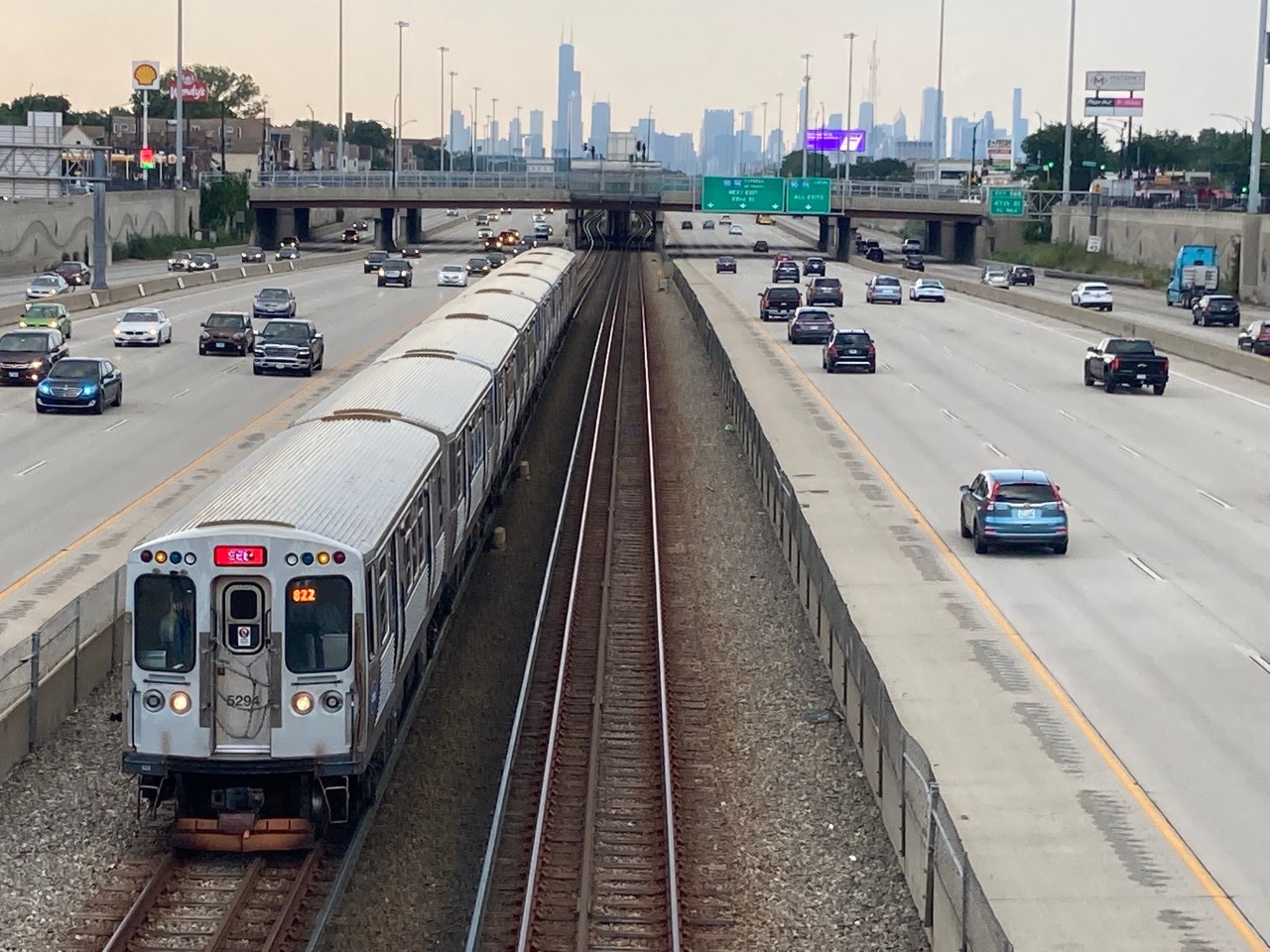Needless to say, the COVID-19 pandemic has been an extremely challenging time to be running a public transportation system. In addition to the demand for higher levels of sanitation, ridership and revenue plummeted during the Stay at Home period as residents who could do so telecommuted. Yet essential workers still had to show up up in person, meaning it was crucial to keep service going for them, while avoiding crowding on still-busy lines. Meanwhile, fewer "eyes in the cars" on train lines increased the likelihood of public safety and quality-of-life issues.
In the face of these challenges, and the uncertainty of whether the federal government would come through with emergency funding for public transportation, most U.S. transit systems opted to reduce service. In contrast, despite the fact that CTA ridership fell by up to 80 percent, the agency took a gamble by not cutting hours or frequency for bus and 'L' lines. (At least this was the case on paper – I've seen some complaints on social media about longer waits between runs on the Red Line, for example.)
I have heard some critiques of the CTA's strategy. For instance, a transit expert I spoke with questioned why the the agency ran empty cars on the North Side's Brown Line, which is normally largely ridden by white-collar Loop office employees, instead of reducing service and using the funds to run more buses on key routes for essential workers like the 79th Street bus, which experienced crowding.
But overall, now that the feds have provided stimulus cash for public transportation, it appears that the CTA's gambit has paid off. It stands as evidence that Chicago leaders understand the crucial role transit plays in keeping the city running, especially for its most vulnerable residents, including low-income people, youth, seniors, and those with disabilities. (Of course that principle wasn't reflected in Mayor Lori Lightfoot's decision to shut down transit and Divvy bike-share service during last year's civil unrest.)
Last week the American Public Transportation Association recognized the CTA for successfully persevering through the COVID headwinds, naming it the top large transit agency in North America for 2020. Agency president Dorval Carter Jr. was also named the top transit executive of the year.
“Few transit agencies in the United States have made more progress in modernizing their system over the past several years than the Chicago Transit Authority,” APTA said in a statement announcing the awards, which honor transit agencies and officials “who have demonstrated significant leadership, are outstanding role models of excellence, and whose accomplishments and innovations have greatly advanced public transportation.”
According to the CTA, this is the first year that both awards have gone to the same system. “It is an honor to receive these awards, because they are a recognition of the hard work and dedication our employees showed throughout the pandemic,” Carter said in a statement. “Everyone at this agency understands the critical role the CTA plays in keeping our city moving, and they demonstrate their commitment every day.”

"Throughout the pandemic, the CTA under President Carter's leadership worked incredibly hard to ensure our essential workers remained connected to its reliable and affordable service," said Lightfoot in a statement. "Even while under immense pressure, President Carter and the CTA have showed up for our residents time and time again – all while leading an unprecedented mission to modernize our stations, vehicles and technologies."
According to a survey of CTA customers during the first few months of the pandemic last year:
- 19 percent of respondents riding during the stay-at-home order were healthcare/medical workers
- 26 percent of respondents said that they would not have been able to reach their workplace without CTA
- 62 percent of respondents reported using CTA to access food and other essential items during the stay-at-home order
“When Chicago needed us the most, we did everything we could to provide them the service they relied on,” Carter said in a statement. “Our essential workers were moving the City’s essential workers, and it was a responsibility we took very seriously.”
The CTA also pointed to its strategies for coping with pandemic challenges as reasons why it deserved the APTA award. These tactics included electromist sprayers; setting capacity limits on vehicles to facilitate social distancing; implemented free fares and rear-door boarding on buses for several weeks; and provided free face masks on buses and at stations.
The CTA also created a ridership dashboard showing bus and train crowding to help residents make decisions about when to commute. The agency also distributed 30,000 Travel Healthy Kits, including a reusable cloth face mask, hand sanitizer and healthy-travel tips.
What do you think – did the CTA deserve this award as the transit agency that best coped with the massive challenges of COVID-19?




